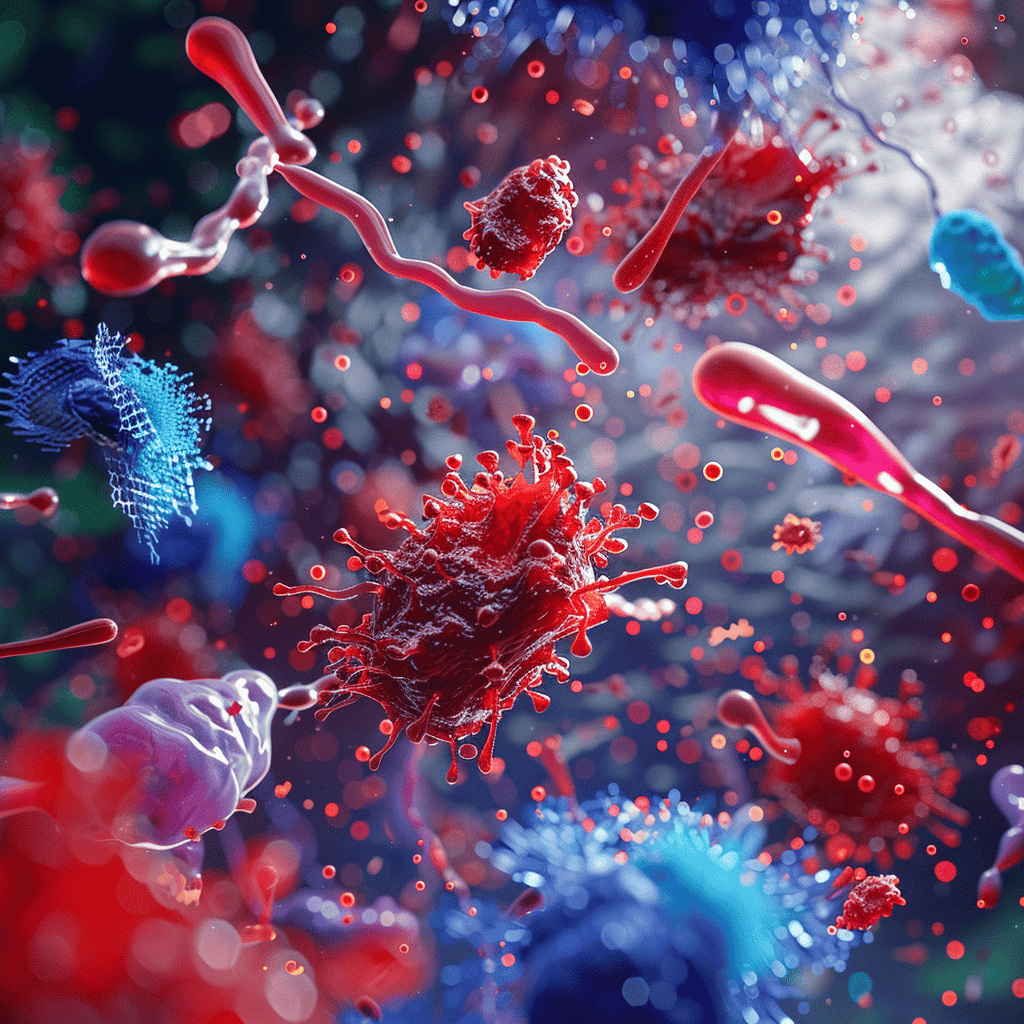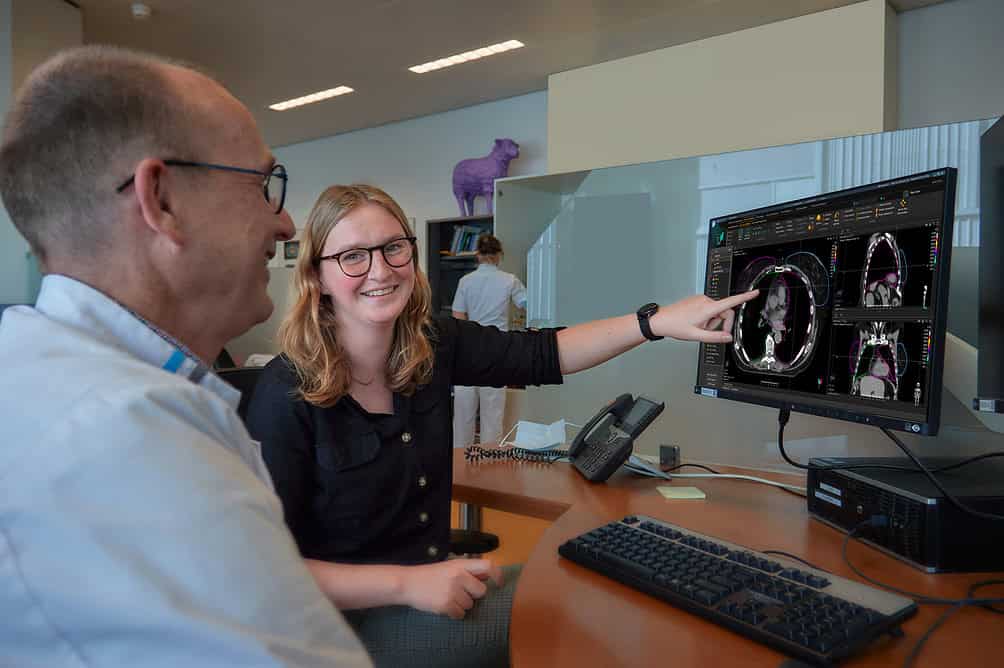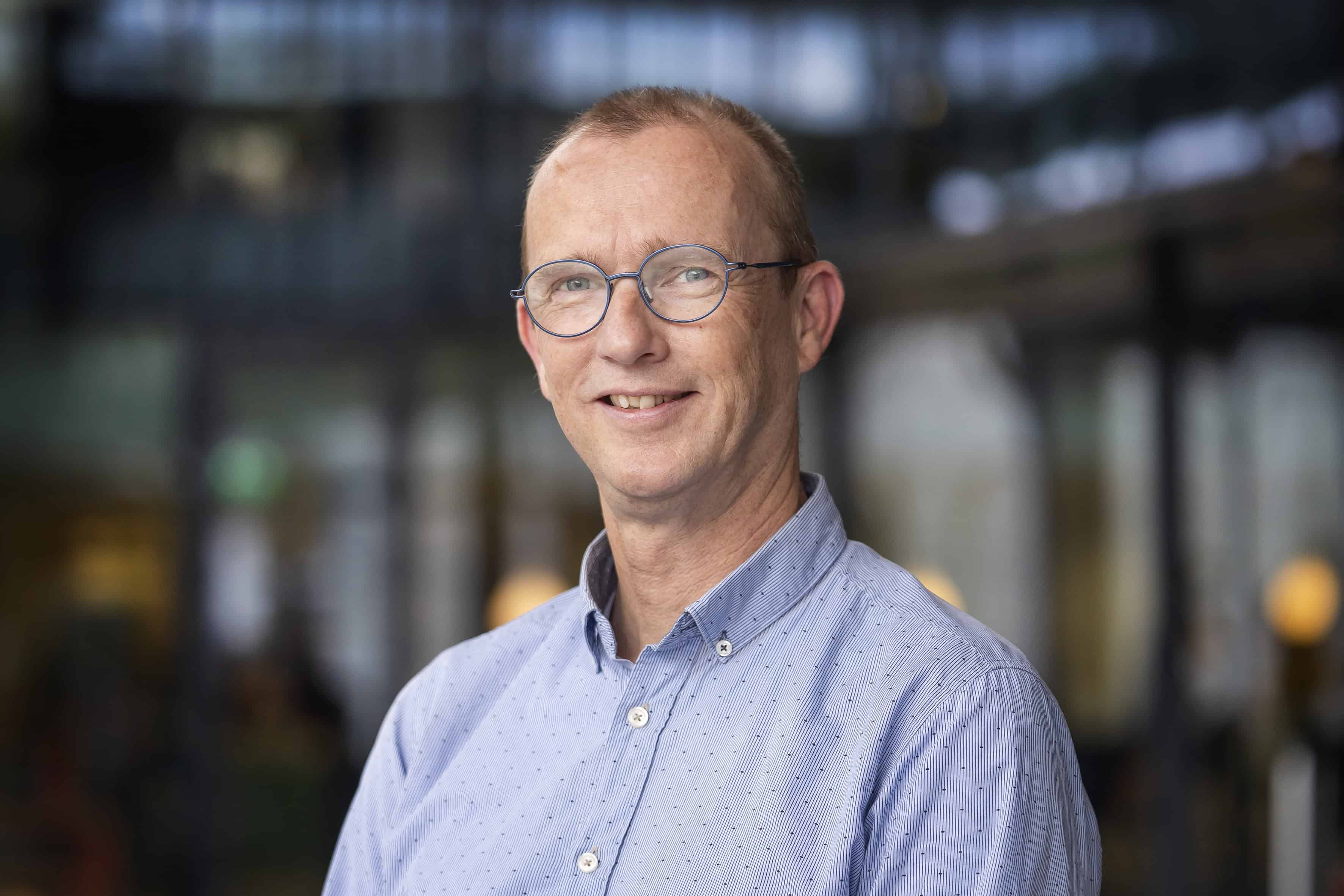The technology that makes cancer radiation possible has improved dramatically in recent decades, says clinical physicist Quinn Hoekmans. He has been working at Katarina Hospital in Eindhoven for 23 years. “We can irradiate more precisely. This has many advantages, fewer treatments are needed, and it is less invasive for patients,” he says. On June 7, 2024, Hawkmans will give his opening speech during the conference Medtech Day At Eindhoven University of Technology. Last year, in addition to his work at the hospital, he was appointed professor of radiation therapy. The Hochmans Department supervises many graduate students from master’s programs and doctoral students. “The cross-fertilization between the hospital and the university ensures that innovations are put into practice more quickly. This is very important in healthcare,” he says.
Hawkmans studied physics himself. During his postgraduate training in the Department of Radiotherapy at the University Hospital in Lund, Sweden, he was supervised by two clinical physicists. “When I returned to the Netherlands, I realized I wanted to do this too.” After obtaining his master’s degree, he followed a four-year course at a hospital – the Netherlands Cancer Institute in Amsterdam – and then started working at the Catarina Hospital as a clinical physicist. “This is a beautiful profession and will continue to be so. We look at how to improve a patient’s treatment and what the nurses and doctors need to carry out the treatment as best as possible.
Why is this important?
New technology such as artificial intelligence plays an important role in improving cancer treatment. When universities and hospitals collaborate in the development process, innovations often take effect sooner. This affects the lives of many patients and their loved ones.
Innovations in practice
As a clinical physicist, Hawkmans deals with the technical aspects of innovation in healthcare on a daily basis. What equipment is needed? What’s on the market? What works and what doesn’t? Participates in the approval, purchase and installation of innovations. This is followed by a thorough check to see if everything is working properly.
More accurate irradiation
According to him, more precise irradiation is the biggest and most influential development in recent years. “When I was doing my training, we would sometimes treat patients with radiation every day for seven to eight weeks. This is very stressful. If we want to be exposed to less radiation, we have to give more radiation each time. Before, this was not an option because The surrounding healthy tissue is also affected during treatment and this may cause more side effects.
For more accurate irradiation, two components and associated techniques are important. “First, the radiation machine itself must be able to work more precisely. This way we treat only the tumor and touch less healthy tissue. In addition, it is important to clearly see where we are irradiating during treatment. Now the image quality on a standard treatment machine can be compared to a Poor CT. MRI images can now also be done on a new treatment device and this makes seeing soft tissues much easier. “We are working with the supplier of both devices to see how we can improve the image quality further,” explains Hochmans.
He says current standard devices only image the patient’s body before and after treatment. The new devices image the patient’s body during radiotherapy. About 130 new devices are now in use worldwide, compared to about 12,000 standard treatment devices. “With the new devices, we can also make adjustments during treatment.” This means that the number of treatments for prostate cancer patients, for example, could be reduced from twenty to five, according to Horkmans. “This is more pleasant for the patient.”

Treating cancer using smart “umbrellas” preserves healthy body tissue
Cancer remains one of the leading causes of death in the Netherlands. Fortunately, researchers are making a lot of progress when it comes to effective treatments. Pauke Alpada and his colleagues work in Wageningen…
Help from Amnesty International
Artificial intelligence plays a key role in improving radiotherapy. “Using AI, we can improve image quality on processing equipment. For example, a well-trained model can better filter out noise from images so we get a clearer image. AI can also support doctors in pointing out the tumor and the area Radiation on the image. “We have been using artificial intelligence for two years to identify target areas in the chest, heart and lungs. “One of my PhD students is looking into how we can extend this to other patient groups. In addition, more research is being done into dose planning using artificial intelligence. We are developing this with a company that can put this into practice. I think it is very important That we can also put the innovations we develop into practice in this way and in this way can also reach other hospitals.
Hawkmans sees the potential of AI, but also notes that people, both patients and professionals, are sometimes hesitant. “People often think that patients will see a doctor much less because of the use of artificial intelligence, but I think the opposite is true. The doctor has to spend less time on tasks such as identifying target areas for radiation, and therefore pays more attention to human contact. This is also Very important in the context of ongoing staff shortages.

Innovation cycle
Hoekmans believes that collaboration between universities and hospitals is indispensable for implementing relatively new technologies such as artificial intelligence. “At the university, we are at the beginning of innovation and the hospital is where it eventually ends. This cross-pollination is of great value,” he explains.
In his work, Hurkmans always follows a cycle of learning, innovation, implementation and validation. “We naturally learn in the hospital what works and what doesn’t work in practice. We then innovate – often in collaboration with the university – to see if we can make improvements. The innovations must eventually be implemented on the ground. Finally, we verify Whether the new techniques or methods work well and then the cycle starts again.”
For example, advances ensure that treatment is less invasive. “Radiotherapy is actually cutting without a knife. We want to remove the tumor, but without damaging healthy tissue. For example, in recent years we have shown that radiotherapy for a certain lung tumor is no less effective than surgery. One in four patients suffer from complications during Surgery, and one in ten suffer from radiotherapy.
Step by step towards improvement
Hochmans believes that radiotherapy has improved in recent years, but it is done in small steps. “We can’t expect a big breakthrough every year. In health care, it’s important to improve, see how things are going and then build on that. It’s a slow process.” He says he looks at the whole matter realistically. “I have no illusions that we will be able to solve the problem of cancer, it will always be there – in one form or another. But we can continue to improve treatments and make sure the process for the patient is as optimal as possible.
Coen Hurkmans will be inaugurated on June 7 during MedTech Day at TU Eindhoven. You can register via this link.










More Stories
GALA lacks a chapter on e-health
Weird beer can taste really good.
Planets contain much more water than previously thought